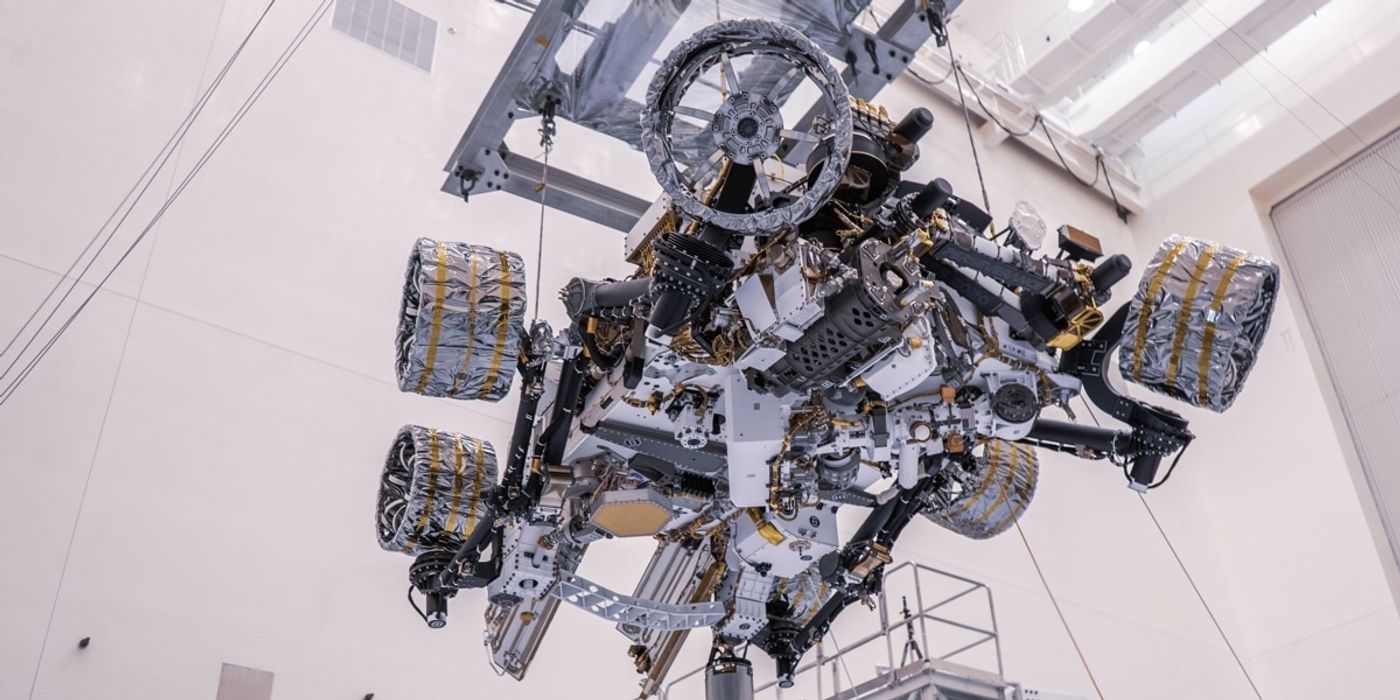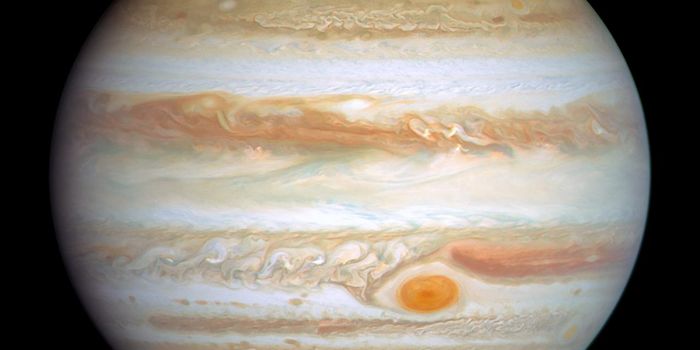NASA Balances the Perseverance Rover's Chassis
Engineers at NASA’s Kennedy Space Center in Cape Canaveral, Florida has been working tirelessly over the past several works in an effort to add finishing touches to the Perseverance Rover (formerly Mars 2020) before it launches on a one-way trip to Mars later this year.
From adding the rover’s critical sampling equipment package to attaching its autonomous helicopter, it would be an understatement to say that NASA’s Engineers are making strides to prepare Perseverance in time for launch. Fortunately, yet more progress was made this past week after those same engineers performed a plethora of convoluted balancing acts on the Perseverance rover’s 2,260-pound chassis.
Image Credit: NASA/JPL-Caltech
In a public statement, NASA describes the process of balancing the Perseverance rover as being akin to an automobile mechanic placing small weights on a vehicle’s rim to ensure proper tire balance; this effectively mitigates any unwanted tire wobbles as you drive down the road at highway speeds. While balancing Perseverance’s chassis was substantially more complex, the chief reason for doing it is surprisingly similar.
To make this happen, the engineers had to rotate the Perseverance rover along its X-axis to discover its center of gravity relative to its z-axis. In doing so, they recognized an imbalance in the rover’s mass distribution that called for approximately 13.8 pounds’ worth of weights to be added to the chassis. Upon adding the artificial weight, Perseverance’s center of gravity is now believed to be within just 0.001 inch of the intended target.
Related: NASA installs the Perseverance rover’s wheels and parachute system
As tedious of a detail as balance may seem for such a complex project, it turns out to be rather critical to the success of the rover’s primary mission. It’s imperative that Perseverance sports a near-perfect balance as it enters the Martian atmosphere, as settling for anything different would mean risking the spacecraft’s integrity and spelling out potential disaster upon landing.
Assuming Perseverance wasn’t in perfect balance upon landing, there’s a possibility that it would impact the rover’s calculated trajectory as it lands. The numbers assume that Perseverance is in perfect balance, so an imbalance could mean that Perseverance lands somewhere it isn’t supposed to, or that it lands crooked, and so on.
Now that Perseverance is in near-perfect balance, it’s closer than ever to being ready for its launch later this year. The window of opportunity opens up on July 17th and closes on August 5th. If it can launch on time, then it will reach Mars by February 18th, 2021.
Source: NASA









